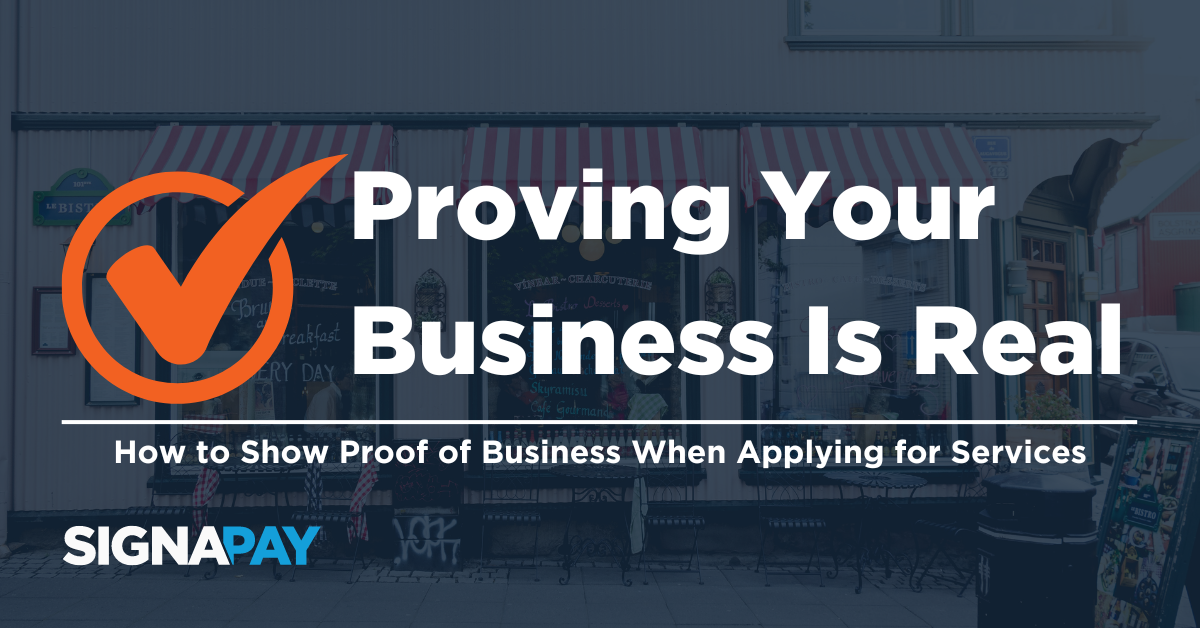Ways to Prove Your Business Exists and Is Operating

Establishing your business’s legitimacy and operational status is crucial in various situations, from securing loans to building trust with clients and partners. But how do you provide concrete evidence that your business is not just a concept but a functioning entity? Here are seven foolproof methods to demonstrate that your business exists and is actively operating:
1. Corporations:
The Articles of Incorporation serve as the primary proof of existence for corporations. Filed with the Secretary of State, these documents outline vital details about the corporation’s formation and structure. Since corporations undergo annual updates, presenting articles from the first year and the most recent year substantiates the business’s existence and continuity.
2. Sole Proprietors:
Sole proprietors must obtain a business license, typically at the city, county, or state level. Compliance with local licensing requirements is essential, as some jurisdictions may demand multiple registrations across different administrative levels. Verifying local regulations ensures your business’s full legal recognition.
3. Partnerships:
Partnerships validate their existence through partnership agreements, also filed with the Secretary of State. These agreements delineate each partner’s stake in the business and operational responsibilities, reinforcing the partnership’s authenticity.
4. Tax Returns:
Business tax returns provide concrete evidence of operational activity by demonstrating consistent tax payments under the business name. Lenders and other stakeholders commonly accept tax returns as conclusive proof of a business’s existence and financial engagement.
5. Physical Location Pictures:
Businesses with physical premises can substantiate their existence through visual documentation. Capturing images of the business location, especially during operational hours, offers tangible proof of the business’s presence and activity. Financial institutions may request such evidence, sometimes coupled with on-site inspections for higher-value transactions.
6. Online Presence:
In today’s digital age, an online presence is integral to validating a business’s existence. Websites, social media profiles, and digital platforms serve as virtual storefronts, reflecting the business’s scope and activity. A robust online presence indicates active operations and engagement with customers.
7. Documentation:
Official documents such as customer contracts, lease agreements for business premises, and payroll records further substantiate a business’s operational status. These records demonstrate ongoing business transactions, contractual agreements, and regulatory compliance, reinforcing the business’s legitimacy.
Whether seeking financing, establishing partnerships, or simply validating your business’s existence, employing these seven methods ensures comprehensive proof of your business’s operational status. By leveraging a combination of legal documents, financial records, visual evidence, and online presence, you can confidently demonstrate your business entity’s authenticity and viability.
Recent blog posts
The latest industry news, interviews, technologies, and resources
Strategies for Improving Cost Control and Expense Control
Boosting Your Bottom Line: Strategies for Improving Cost and Expense Control In the fast-paced world of business, keeping a tight grip on costs and expenses is essential for maintaining profitability …
No-Fee Payment Processing: What Businesses Need to Know
No Fee Payment Processing: Understanding Surcharging, Cash Discounts, and Dual Pricing Credit card transactions offer convenient payment options for consumers but often come with fees that can burden businesses. Fortunately, …
Understanding PCI Compliance: Safeguarding Your Business
Discover the essential role of PCI compliance in safeguarding sensitive payment information in today’s digital landscape. Learn about the Payment Card Industry Data Security Standard (PCI DSS) and its stringent requirements for protecting cardholder data across online, in-store, and mobile payment channels. Explore the impact of PCI compliance on data security, operational efficiency, and customer trust. Discover how adherence to PCI standards can mitigate financial risks such as regulatory fines and reputational damage, while enhancing long-term business sustainability. Explore more about PCI compliance and secure your business’s future today.